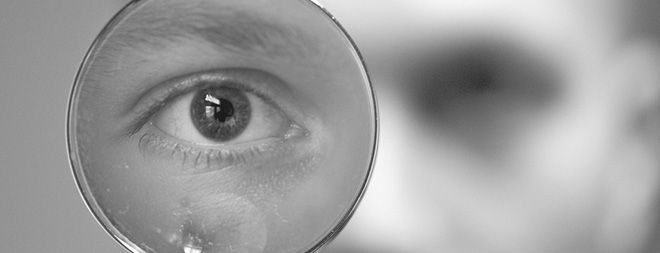Hearing A Word Can Help You See The Invisible

(ISNS) -- Verbal cues can alter what we think we see, sometimes causing us to see what is not actually there.
Vision simply isn’t as objective a view of reality as we think it is, according to researchers at Yale University and the University of Wisconsin-Madison. Just saying a word can alter that reality.
“Language alters some pretty fundamental visual processes,” said Gary Lupyan, assistant professor of psychology at Wisconsin. The work is published in the journal Proceedings of the National Academy of Sciences this week.
“Some people want to argue that vision is in some sense objective, an objective view of reality,” Lupyan said. His study shows you can alter visual perception by merely saying a word.
Lupyan and Emily Ward of Yale reported the results of three experiments with 20 students at Wisconsin and the University of Pennsylvania, where Lupyan did his post-doctoral work.
The students were subjected to what is called flash suppression. They looked at visible noise patterns through different types of 3-D glasses. The pattern, a series of computer-generated random lines, essentially confused the eye. The left eye could only see the lined pattern; the right eye could see objects when they were flashed through the glasses.
The noise suppressed perception, so when the left eye mask was flashing, the right eye could not see anything.
Sign up for the Live Science daily newsletter now
Get the world’s most fascinating discoveries delivered straight to your inbox.
Half the time, the subjects were given verbal cues identifying the objects before they were flashed to the glasses, and the other half, they saw only the pattern.
"Some of the cues they heard were correct, sometimes incorrect," Lupyan said. And sometimes they gave no cue at all.
The subjects were then asked what they saw.
“If the label was correct, they were more likely to see it if was actually there,” Lupyan said. “If you heard the word ‘kangaroo,’ you were more likely to see a kangaroo.”
If the picture and the cue were close in shape – for instance a basketball and a pumpkin – they were also more likely to see and identify the correct object. In fact, the closer an object got to the cue, the more likely the subjects were to see it. For example, if the cue were the word “square” the squarer the object shown, the more likely it was to be seen.
If the subjects were given the wrong cue, the object usually went unseen.
The students, prompted by the spoken cue -- the word “kangaroo” for instance -- saw a kangaroo.
“We hypothesize that when information associated with verbal labels matches stimulus-driven activity, language can provide a boost to perception, propelling an otherwise invisible image into awareness,” the researchers wrote.
This may be the opposite of what psychologists call inattention blindness, according to Shlomo Engelson Argamon, a computational linguist at Illinois Institute of Technology in Chicago.
Many psychology students are familiar with the so-called "Invisible Gorilla" experiment. A video shows a group of students passing a basketball back and forth. Viewers are told to count the number of passes. A man in a gorilla suit walks right by the students and most viewers never notice. Their attention is elsewhere
In a recent study at Harvard, 24 radiologists were shown 10 CT scans of a cancerous lung and then asked to click on every cancerous nodule. In the last five scans, the researchers superimposed a small picture of a gorilla waving his arms. Twenty did not see the gorilla, and of those 20, 10 were looking right at it. During the experiment, the researchers were monitoring eye movements and found that the students’ attention was elsewhere.
In Lupyan’s experiment, the students’ attention was drawn to the object, even if it was hard to see.
“By focusing your attention on a specific task or specific thing or shape (as in this paper), those things will be more accessible to the visual system, while very different things will be less accessible, and possibly invisible,” Argamon said.
The research is part of an ancient argument, Lupyan said: How objective is perception? Is it subject to outside influences? In other words, is what we see always what really is, or is reality more like Plato’s cave, full of shadows only reflecting what is real?
The research implies the shadows are closer to reality.
Inside Science News Service is supported by the American Institute of Physics. Joel Shurkin is a freelance writer based in Baltimore. He is the author of nine books on science and the history of science, and has taught science journalism at Stanford University, UC Santa Cruz and the University of Alaska Fairbanks.












